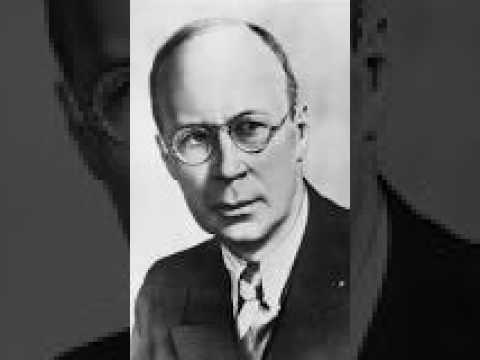– Composer: Sergei Sergeyevich Prokofiev (23 April 1891 — 5 March 1953)
– Orchestra: Warsaw National Philharmonic Orchestra
– Conductor: Witold Rowicki
– Soloist: Sviatoslav Richter
– Year of recording: 1958
Piano Concerto No. 5 in G major, Op. 55, written in 1931-1932.
00:00 – I. Allegro con brio
05:06 – II. Moderato ben accentuato
09:06 – III. Toccata. Allegro con fuoco (più presto che la prima volta)
10:59 – IV. Larghetto
17:40 – V. Vivo
After the Fourth Piano Concerto, for the left hand, the Fifth is the least popular of the five piano concertos Prokofiev wrote. Yet the work offers much of great appeal and delivers a challenge to the finest virtuosos. The composer spoke of the Fifth’s abundance of melody, pointing out that each of its five movements contains four or more melodies. Those unfamiliar with the concerto might conclude from that statement that the work must be a large one; yet its duration is typically only 22 to 25 minutes.
The formal structure of the concerto is unusual and rather episodic, hardly clinging to a typical sonata-allegro scheme. If a tag can be put on the work, one to capture both its music and performance features, it would be “athletic,” or perhaps “acrobatic.”
– The first movement, marked Allegro con brio, offers a colorful, jumpy main theme, containing wide leaps for the piano and much difficult writing. A lyrical clarinet melody contrasts well with the main material and the movement eventually comes to a brilliant conclusion with a final backward leap on the piano.
– The second movement carries the marking Moderato ben accentuato, and while a bit less effervescent and driven, it is also lively in its march theme and contains glissandos and glissando-like elements that leap about and emphasize the grotesque and humorous nature of the main theme. Those coming to the concerto for the first time may find this colorful, rhythmic movement the most appealing of the five.
– The third movement Toccata derives its main theme from the opening of the first, and serves almost as a belated development section to it. Its furious pace (Allegro con fuoco) and challenging writing for the orchestra, especially for the string section, give the piece a mood of brilliance and breathlessness typical of the composer’s earlier Toccata and of other similar piano works.
– The Larghetto fourth movement is the deepest of the five and also the most lyrical. Its main theme is gentle and lovely. A tense middle section is brilliantly conceived, with crashing chords on the piano at the climax accompanying the eerie orchestral rendering of the profound theme.
– The finale, marked Vivo, contains a mixture of menace and humor, of otherworldliness and joy. Near the end of the exposition a variation on a theme from the third movement appears, and at the same racing tempo. After a dreamy, unearthly middle section, the mood brightens and the piece ends brilliantly.
Prokofiev was the soloist in the work’s premiere on 31 October 1932 in Berlin, led by Wilhelm Furtwängler and on the same program with Paul Hindemith as violist in Berlioz’s Harold in Italy. While Prokofiev was only midway though his career, he wrote unfortunately no more works for piano and orchestra after the tepidly-received Fifth Concerto.




